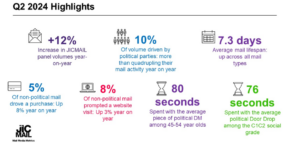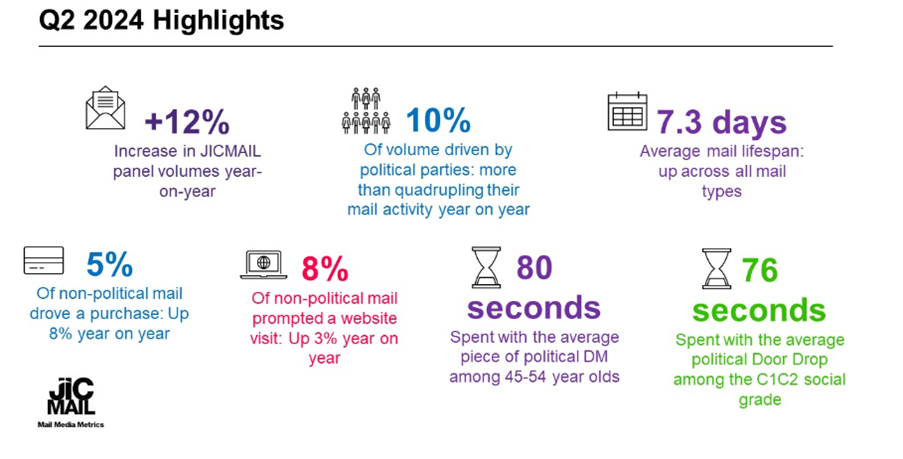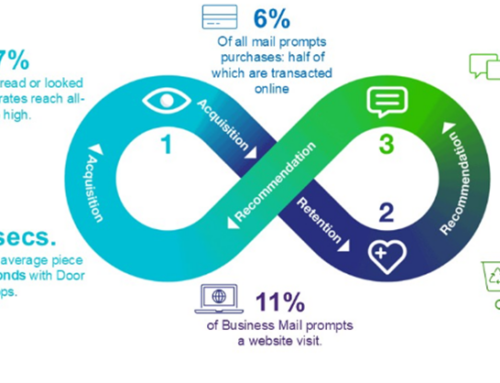The latest data from JICMAIL’s Q2 2024 release paints a bright picture for direct mail once again, with a significant increase in both mail volumes and consumer engagement.

Mail volumes experienced a 12% rise compared to the previous year. Political parties preparing for the General Election contributed 10% of this overall volume, representing a massive year-on-year increase of over 343%. But political mail was not the sole contributor to this growth. Sectors like retail and travel also capitalised on the mail channel, further reflecting the broad-based recovery and confidence within the industry.
Alongside volume growth, consumers responded positively, with mail engagement metrics improving across the board.
Direct Mail, Door Drops, Business Mail, and Partially Addressed Mail all saw increases in both the amount of time spent on mail and the lifespan of items in homes.
For instance, the average Direct Mail piece stayed in the home for 7.3 days, up 4% year-on-year, while Door Drops were kept for an average of 5.9 days, representing a 3% increase. These improvements highlight that consumers are not only receiving more mail but are also giving it more attention.
Mail also continued to prove its value in stimulating commercial actions. DM packs that prompted a purchase rose by 8% year-on-year, reaching 5.3% of all mail, while 8% of mail drove recipients to visit a website.
Over half of those purchases (51%) occurred online—a significant milestone since this metric was first tracked separately in late 2023. Financial services and utilities were particularly successful at converting mail engagement into online purchases.
While political parties dominated the mail volumes, their use of Direct Mail and Door Drops also stimulated vital household conversations. Nearly 15% of political Direct Mail prompted discussions, while Door Drops generated discussions in 11.9% of cases. These high engagement rates demonstrate the power of mail in driving personal, face-to-face interactions within homes—an invaluable outcome for any advertiser, but particularly potent during a heated election cycle.
Interestingly, different audiences responded to mail formats in varied ways. Younger audiences and C1C2 households were more engaged with political Door Drops, while Direct Mail tended to attract the attention of those aged 45 and above, regardless of social grade. These insights underscore the adaptability of the mail channel, as it resonates with distinct demographic groups through tailored approaches.
As ever, the positive outcomes highlighted in this latest data underline the importance of maintaining high standards in data hygiene. Whatever the sector, the foundation of any successful campaign lies in the quality of the data that fuels it. Accurate, up-to-date recipient information ensures that mail reaches the intended audience and maximises engagement potential. Poor data quality not only results in wasted resources but also diminishes trust with consumers.
As mail continues to grow in effectiveness best practices in data hygiene will remain vital to securing the high engagement and conversion rates that mail currently delivers – after all we all know what happens if targeting and personalisation levels drop…





